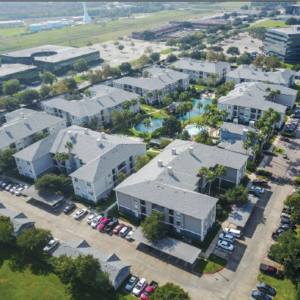Sponsors are familiar with using preferred equity alongside a long-term mortgage loan, typically with a term of 5-12 years. What they may not have considered, however, is that preferred equity can be used alongside bridge debt in a similar manner. Sponsors who are looking to fill a short-term gap in equity should consider using preferred equity along with their senior loan and common equity to see if it makes sense for their investment.
Download the PDF version of this report here:
When Should Bridge Preferred Equity be Used?
Bridge preferred equity can be used in short-term situations such as bridging between a construction loan and a long-term permanent loan during a lease-up period or when refinancing to a new long-term senior loan. In these cases, it may make sense to consider using preferred equity to make up any gaps in the capital stack rather than more expensive common equity.
Length of Term
Although it varies among preferred equity providers, the length of their investment in bridge deals can be anywhere from six months to five years, inclusive of optional extensions. Typically, this would be paired with a senior loan term starting around five years. As with the longer-term preferred equity structures, a bridge product will typically be co-terminus with the senior loan; if the economics make sense on all sides, a bridge preferred equity investment may be able to convert to a long-term investment alongside the new senior loan, as well.
Differences from Regular Preferred Equity
Bridge preferred equity does have some structural differences from the longer-term investments in order for the cash flows to make sense with a shorter runway. While the surplus cash flow metrics in a typical preferred equity investment of 5-12 years often are based around a set percentage that increases over the investment term, a bridge investment will be structured around an exit constraint. This will vary by the preferred equity provider, but usually depends on the estimated loan amount of the new senior loan when the sponsor exits the bridge deal.
Other differences in structure may include a lockout period for a certain number of months rather than a minimum return multiple, not having a minimum DSCR constraint, or requiring additional reserves or escrows designed to cover operating shortfalls or the minimum distribution. Again, all these investment features will depend on the preferred equity provider and may or may not exist in all bridge investments.
What Does Not Change?
Despite the potential differences described above, it’s likely that a bridge preferred equity investment will not differ greatly in the general structure from a regular preferred equity investment. The capital stack will still have the preferred equity subordinate to the senior debt and senior to the common equity. This means that the waterfall of any surplus cash flow remains consistent whether a bridge product or long-term investment is being used.
Another general characteristic of the preferred equity structure that is common across all deal types is the organizational structure. A bridge investment generally requires no specific change to the entity structure used in the investment as provided for in the negotiated operating agreement. Similarly, any recourse events that exist in a longer-term investment would not differ solely due to the short-term nature of a bridge investment in most cases.
What It All Means
All of this means that using preferred equity as part of a bridge transaction can make sense for many of the same reasons as using it as part of a long-term investment. Preferred equity can still reduce the cost of capital in many situations and using a bridge investment can even help sponsors obtain a new preferred equity financing when the new senior loan is obtained as the preferred equity provider will be familiar with the property and the sponsor. Sponsors may find it valuable to consider adding preferred equity to their bridge debt in these cases.




